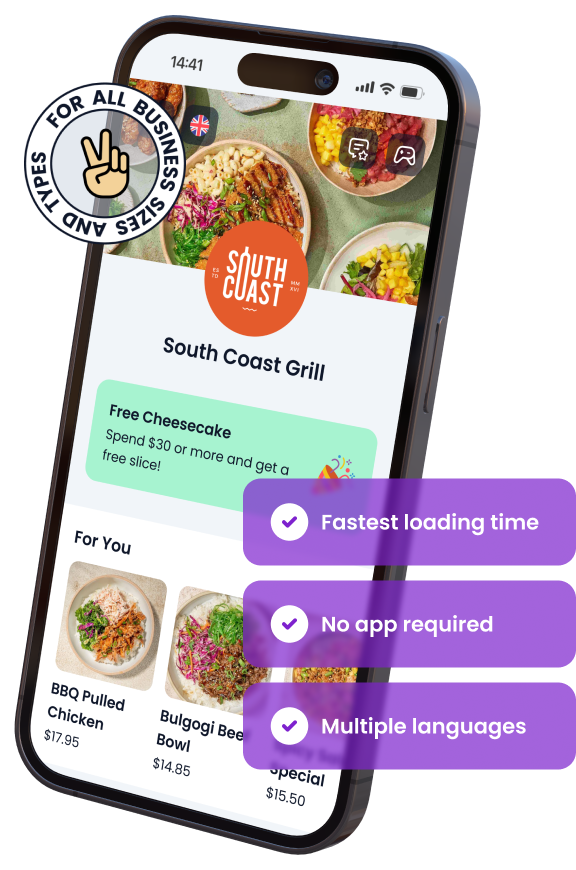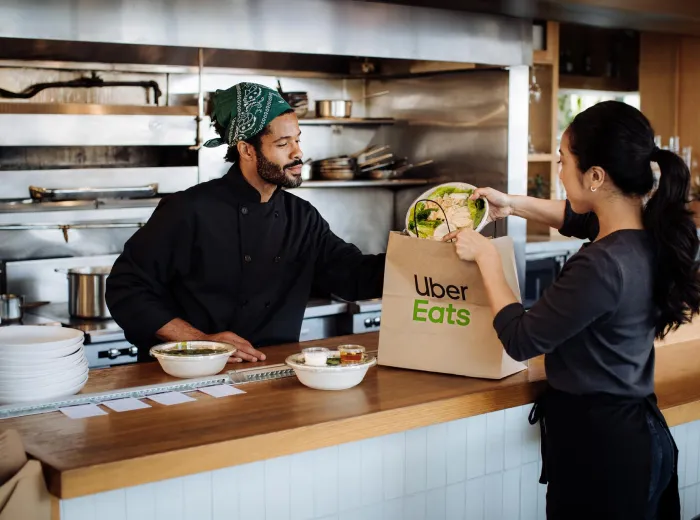

How Much Money Do Restaurant Owners Make Each Year in The UK?
The UK restaurant industry is known for its diversity and vibrancy, catering to a wide range of tastes, from quick-service eateries to luxurious fine dining experiences. Yet, behind the enticing aromas and bustling kitchens lies the question that many aspiring restaurateurs ponder: How much money do restaurant owners actually make each year in the UK? While some owners achieve great financial success, others may struggle to break even. The earnings of restaurant owners can vary dramatically depending on several factors, including the type of restaurant, its location, and operational strategies.
Understanding the financial landscape is crucial for those already in the business and for those looking to venture into the restaurant industry. Whether you own a cozy café in a small town or manage a chain of high-end restaurants in London, knowing the key elements that affect profitability can help you navigate the challenges of the competitive UK market.
In this article, we’ll explore the average earnings of restaurant owners across the UK, dive into the factors that impact profits, and offer practical strategies to help restaurant owners increase their bottom line.
Would you like to listen our deep-dive conversation about this article?
Understanding the UK Restaurant Industry Landscape
The UK restaurant industry is a dynamic and evolving sector that plays a significant role in the country’s economy. To understand how much restaurant owners make, it’s essential to first grasp the key factors shaping the industry. From market trends to operational costs, various elements can influence restaurant profitability. This section delves into these aspects to provide a clearer picture of what affects the earnings of restaurant owners in the UK.
Key Factors Shaping Restaurant Profits in the UK
Several key factors can have a direct impact on how much money a restaurant owner earns annually:
- Location: Restaurants in major cities, particularly London, often have higher overheads but also attract more customers willing to spend. On the other hand, rural restaurants may have lower costs but face a smaller customer base.
- Cuisine and Concept: Unique or trendy dining concepts can charge premium prices and attract more customers, increasing profitability.
- Seasonality: Restaurants in tourist-heavy areas might see revenue fluctuations depending on the season.
- Economic Climate: Inflation and changes in consumer spending habits can influence how much customers are willing to spend on dining out.
- Competition: The level of competition in your area can significantly affect your restaurant’s pricing, customer acquisition, and overall profitability.
Market Trends Impacting Restaurant Revenues
Current market trends are reshaping how restaurants operate and generate income. Staying aware of these trends can help restaurant owners maximize their profitability.
Rising Costs and Inflation: Increased costs of ingredients, utilities, and staffing are pressuring profit margins.
- Average food price inflation in the UK: 12% in 2023
- Energy costs spiking by over 50% in certain regions
Consumer Spending Habits and Dining Preferences:
- Growth in demand for vegan and sustainable dining options.
- Rise in delivery and takeaway services as consumers opt for convenience over in-house dining.
Technology Adoption:
- Restaurants embracing digital ordering platforms and self-service kiosks are seeing improved efficiency.
- Increased use of loyalty apps and data-driven marketing to retain customers.
These factors collectively contribute to how much revenue a restaurant can generate and where owners need to focus to maintain profitability. Understanding these dynamics is key to staying competitive in the UK restaurant landscape.
What Is the Average Income for UK Restaurant Owners?
Determining the average income for restaurant owners in the UK is complex, as it varies widely based on factors such as the type of establishment, its location, and operational strategies. On average, UK restaurant owners earn between £30,000 and £90,000 annually, but this can fluctuate depending on whether the restaurant is an independent venture or part of a larger chain, among other considerations. This section breaks down the different elements that influence income, giving restaurant owners a clearer picture of what to expect.
Breakdown by Restaurant Type (Fast Food, Casual Dining, Fine Dining)
The type of restaurant has a significant impact on the owner’s income due to differences in pricing models, customer volume, and operating costs.
Fast Food Restaurants:
- Typically lower profit margins but higher volume of customers.
- Annual owner income: £25,000 – £50,000.
Casual Dining Restaurants:
- Moderate pricing with steady customer flow.
- Annual owner income: £35,000 – £75,000.
Fine Dining Restaurants:
- Higher price points, offering larger profit margins but fewer customers.
- Annual owner income: £70,000 – £150,000.
Regional Differences in Restaurant Earnings
Location plays a crucial role in how much restaurant owners make, with certain regions offering higher revenue potential due to local demographics and consumer spending power.
London:
- Restaurants in the capital typically earn more due to higher foot traffic and spending power, but also face higher operational costs.
- Owner income: £50,000 – £120,000.
Other Major Cities (Manchester, Birmingham, Edinburgh):
- Slightly lower income potential compared to London but still lucrative.
- Owner income: £40,000 – £100,000.
Rural Areas:
- Lower overheads but a smaller customer base.
- Owner income: £20,000 – £50,000.
How Restaurant Size Impacts Earnings
The size of a restaurant—measured by seating capacity and overall footfall—directly correlates to the owner’s income. Larger establishments may bring in more revenue but often come with higher operational costs.
Small Restaurants (Up to 50 seats):
- Lower revenues, typically less complex operations.
- Owner income: £25,000 – £60,000.
Medium Restaurants (50-150 seats):
- Higher footfall and potential for more revenue.
- Owner income: £40,000 – £90,000.
Large Restaurants (150+ seats):
- Can handle more customers and larger events but with higher staff and supply costs.
- Owner income: £60,000 – £150,000.
Understanding these differences based on type, region, and size allows aspiring and current restaurant owners to set realistic expectations for their income.
What Are the Primary Revenue Streams for UK Restaurant Owners?
Restaurant owners in the UK can draw income from several key revenue streams beyond just serving food and drinks in-house. To maximize profitability, it’s essential to diversify income sources by tapping into opportunities such as delivery services, events, and private dining. This section highlights the main ways UK restaurant owners generate revenue and increase their annual income.
Food and Beverage Sales
The most obvious and primary source of income for any restaurant is food and beverage sales. The profit margins on these items depend largely on menu pricing, sourcing costs, and customer preferences.
Food Sales:
- Typically account for 60-70% of a restaurant’s revenue.
- Profit margins on food range from 10-30%, depending on the type of cuisine, cost of ingredients, and portion control.
- Upscaling dishes with higher-margin items (e.g., desserts, appetizers) can significantly boost profits.
Beverage Sales:
- Include alcoholic and non-alcoholic drinks.
- Alcohol typically carries higher profit margins (30-50%), while soft drinks and coffee can yield 75-80% profit margins.
Delivery and Takeaway as New Income Streams
Delivery and takeaway services have become a crucial revenue stream for many UK restaurants, especially in recent years. Offering this option allows restaurants to reach a broader audience beyond their physical location.
Delivery:
- Popular platforms like Deliveroo, Uber Eats, and Just Eat enable restaurants to expand their customer base.
- While third-party services take a commission of 15-35%, many restaurants still see a 10-20% profit margin from delivery orders.
Takeaway:
- More profitable than delivery as there are no third-party fees involved.
- Can contribute up to 20-30% of a restaurant’s total revenue.
Events, Catering, and Private Functions
Beyond regular dining services, many UK restaurants offer additional services such as hosting events, catering for offsite occasions, or providing private dining experiences. These services often come with higher profit margins and can significantly increase annual revenue.
Events and Private Functions:
- Hosting weddings, corporate events, or private parties allows restaurants to charge premium rates.
- Events typically bring in £1,000-£10,000 per booking, depending on the size and scope.
Catering Services:
- Offering offsite catering for corporate events, parties, and special occasions can add a steady stream of income.
- Catering profit margins are generally higher, averaging 20-30%, as food preparation is done in bulk.
Expanding into these diverse revenue streams enables UK restaurant owners to stabilize their income, reduce reliance on in-house dining, and capitalize on emerging market opportunities. By leveraging food and beverage sales, delivery services, and event hosting, owners can enhance their annual earnings and improve overall business sustainability.
Key Expenses That Affect Restaurant Owners’ Earnings
While there are numerous revenue streams available to UK restaurant owners, it’s essential to consider the various expenses that can impact profitability. Understanding and managing these costs is critical for maintaining a healthy bottom line. Restaurant expenses typically fall into two categories: fixed and variable costs, along with taxes and licenses that are unique to the UK market.
Fixed Costs: Rent, Utilities, and Equipment
Fixed costs are predictable expenses that remain consistent each month, regardless of how busy or slow the restaurant is. These costs can vary widely depending on location, size, and the nature of the restaurant.
Rent:
- One of the largest fixed costs for restaurant owners.
- Rent prices vary significantly across regions. In prime areas like London, rent can account for 10-15% of total revenue, while in smaller cities or rural areas, it’s closer to 5-10%.
- Average monthly rent in London: £3,000-£15,000 depending on location and size.
Utilities:
- Electricity, gas, water, and waste disposal are essential operational expenses.
- Utility costs can range from £1,000-£3,000 per month, with energy prices fluctuating due to market conditions.
Equipment Maintenance:
- Regular upkeep of kitchen equipment such as ovens, refrigerators, and dishwashers is critical to avoid downtime.
- Annual maintenance and replacement costs: £2,000-£10,000.
Variable Costs: Staffing, Ingredients, and Supplies
Variable costs fluctuate depending on the restaurant’s sales and operations. These costs directly influence profit margins and must be carefully managed to maintain profitability.
Staffing Costs:
- Wages, benefits, and training make up a significant portion of a restaurant’s expenses.
- The National Living Wage in the UK is £10.42 per hour as of 2024, but in more competitive markets, wages are often higher.
- Payroll typically accounts for 25-35% of total revenue.
Ingredients and Food Supplies:
- The cost of goods sold (COGS), including food and beverage ingredients, fluctuates with market prices and seasonality.
- Average food cost as a percentage of revenue: 28-35%.
- Effective inventory management and minimizing food waste can help control these costs.
Other Supplies:
- Includes cleaning products, packaging for takeaway, and tableware.
- Can account for an additional 3-5% of revenue.
Taxes and Licenses: What You Need to Know
In the UK, taxes and licenses are a critical component of restaurant expenses. Failing to comply with these requirements can result in fines or business shutdowns, making it vital to budget for them.
VAT (Value Added Tax):
- Restaurants must charge 20% VAT on sales, although a reduced rate of 5% may apply to some food items, like takeaways.
- Ensuring accurate VAT collection and reporting is crucial to avoid penalties.
Business Rates:
- Similar to property taxes, business rates are charged based on the value of the restaurant’s premises.
- Rates vary by region, but average £5,000-£12,000 annually for medium-sized restaurants.
Licenses and Permits:
- A variety of licenses are required to operate legally, such as alcohol licenses, music licenses, and health and safety certifications.
- Annual license costs can range from £500-£3,000 depending on the services offered.
By understanding and managing these key expenses, UK restaurant owners can improve their profit margins and maintain financial stability. Reducing variable costs, negotiating better terms on fixed costs, and staying compliant with taxes and licenses are essential steps toward maximizing income.
How to Improve Your Restaurant's Profit Margins
Improving profit margins is a constant goal for UK restaurant owners, and achieving this requires a strategic approach to both increasing revenue and controlling costs. Whether through enhancing customer retention, cutting operational expenses, or leveraging effective marketing, restaurant owners can take a variety of steps to boost profitability. This section outlines actionable strategies to improve your restaurant’s profit margins.
Strategies for Boosting Sales and Customer Retention
Increasing sales and retaining loyal customers are key factors in improving profit margins. By focusing on customer experience and sales optimization, restaurants can significantly enhance their revenue streams.
Loyalty Programs:
- Encourage repeat business by offering discounts, free items, or rewards for frequent visits.
- Examples: “Buy 10 meals, get 1 free,” or points-based systems.
- Studies show loyalty programs can increase repeat sales by 20-25%.
Optimizing Menu for Profitability:
- Use menu engineering to promote high-margin items.
- Highlight popular dishes and upsell through combo deals or add-ons.
- Regularly analyze your menu to identify and remove low-performing, low-profit items.
Upselling and Cross-Selling:
- Train staff to recommend complementary items, such as side dishes or drinks, which have higher profit margins.
- Upsell premium products like craft cocktails or desserts to increase average order value.
Cutting Down on Operational Costs
Effective cost management is crucial to maintaining healthy profit margins. Reducing waste and improving efficiency can make a significant impact on your bottom line.
Managing Labor Costs:
- Implement flexible scheduling to match staff levels with peak and slow periods, minimizing labor costs during quiet times.
- Use technology such as automated scheduling tools to optimize shifts based on data.
- Cross-train employees to fill multiple roles, reducing the need for excess staff.
Reducing Food Waste:
- Implement inventory management systems to monitor stock levels and expiration dates, reducing spoilage.
- Offer daily or weekly specials to use ingredients before they go to waste.
- Track and analyze food waste to identify problem areas and adjust portion sizes or recipes accordingly.
Energy Efficiency:
- Switch to energy-efficient appliances and lighting to cut utility costs.
- Encourage sustainable practices like turning off equipment during non-service hours.
- Simple changes can lead to energy savings of up to 15-20% on monthly bills.
Marketing Tactics to Increase Visibility and Sales
A well-executed marketing strategy can help restaurants attract new customers while keeping existing ones engaged, leading to higher revenues and improved margins.
Digital Marketing:
- Leverage social media platforms such as Instagram, Facebook, and TikTok to promote your restaurant and engage with local audiences.
- Use Google Ads and Facebook Ads to target specific demographics, driving traffic to your restaurant’s website or delivery platforms.
- Email marketing can be used to promote special offers, events, and seasonal menus, helping to keep your restaurant top-of-mind.
Local SEO (Search Engine Optimization):
- Ensure your restaurant is listed in Google My Business, and optimize your website for local SEO to appear in local searches for phrases like “best restaurants near me.”
- Encourage satisfied customers to leave positive reviews on Google and TripAdvisor, as reviews influence 70-80% of diners’ decisions.
Special Promotions and Events:
- Organize themed nights, holiday specials, or tasting menus to attract customers during slower periods.
- Partner with local businesses or influencers to promote exclusive events or discounts.
Improving your restaurant’s profit margins requires a combination of strategic sales growth, operational efficiency, and targeted marketing. By focusing on boosting customer retention, optimizing costs, and increasing visibility, UK restaurant owners can enhance profitability and build a sustainable business.
Common Challenges to Profitability in the UK Restaurant Sector
Running a successful restaurant in the UK is no easy feat. While there are many opportunities for growth, several challenges can significantly impact profitability. From rising costs to staff retention issues, restaurant owners need to stay ahead of these challenges to maintain a healthy bottom line. This section covers the most common hurdles that can eat into profits and offers insight into how to mitigate these risks.
Economic Factors: Inflation and Rising Costs
One of the biggest challenges for UK restaurant owners is managing the rising costs associated with inflation. These economic pressures affect nearly every aspect of the business, from ingredient prices to energy bills.
Rising Food Costs:
- The cost of essential ingredients has surged due to inflation, supply chain disruptions, and Brexit-related issues.
- Average food inflation in the UK is currently around 12%, with certain goods like meat, dairy, and fresh produce experiencing even higher increases.
Energy and Utility Bills:
- UK energy prices have risen by 50-60%, significantly impacting restaurant operating expenses.
- Increased heating, cooling, and electricity costs mean tighter profit margins, especially for smaller restaurants.
Supplier and Logistics Costs:
- Transportation and delivery costs have spiked, affecting both the cost of goods and timely delivery of supplies.
Staffing Issues and High Turnover Rates
Staffing is another significant challenge, with high turnover rates and wage pressures making it difficult for restaurant owners to maintain a stable workforce.
Staff Shortages:
- Post-Brexit immigration changes have contributed to a shortage of skilled workers in the hospitality industry, particularly chefs and waitstaff.
- Many restaurants struggle to recruit qualified staff, forcing them to operate with fewer workers or rely on expensive agency staff.
High Turnover Rates:
- The hospitality sector has one of the highest turnover rates in the UK, averaging 30-50% annually.
- High turnover leads to increased recruitment and training costs, which can weigh heavily on a restaurant’s budget.
Rising Wage Pressures:
- The introduction of the National Living Wage, which currently stands at £10.42 per hour, has increased labor costs.
- Restaurants in competitive markets often have to offer higher wages and better benefits to attract and retain staff, further squeezing profit margins.
Dealing with Competition and Changing Consumer Trends
The UK restaurant sector is highly competitive, and staying ahead of changing consumer preferences can be a constant battle. With new trends emerging frequently, adapting to the evolving market is crucial for long-term success.
High Competition:
- The UK restaurant industry is saturated, particularly in urban areas where competition can be fierce.
- Competing with both independent restaurants and large chains can drive down prices, limiting the ability to maintain healthy profit margins.
Changing Consumer Preferences:
- There has been a noticeable shift toward healthier, plant-based, and sustainable dining options. Restaurants that fail to adapt to these trends risk losing customers.
- Increased demand for vegan and vegetarian menus, as well as sustainability practices like zero-waste kitchens, are influencing purchasing decisions.
Delivery-First Culture:
- The growing reliance on delivery services has changed consumer habits, with many opting for convenience over in-house dining.
- While delivery can offer additional revenue streams, it also comes with its own set of challenges, including delivery platform fees (typically 15-35%) and ensuring food quality during transport.
Navigating these common challenges is key to achieving sustained profitability in the UK restaurant industry. By adapting to economic factors, addressing staffing concerns, and staying responsive to consumer trends, restaurant owners can protect their margins and remain competitive in an increasingly tough market.
Success Stories: How Some UK Restaurant Owners Make Six Figures
While running a restaurant in the UK can be challenging, there are many success stories of restaurant owners who have built thriving businesses and generate six-figure incomes. These success stories provide inspiration and valuable lessons for those aspiring to reach similar financial heights. This section highlights real-life examples of profitable restaurants and the strategies that helped these owners achieve such success.
Real-Life Examples of Profitable Restaurants
Several UK restaurant owners have built highly profitable businesses through innovation, differentiation, and smart business practices. Here are a few examples:
Niche Market Success:
- A small, independent restaurant in Bristol focused on a fully plant-based, zero-waste dining experience. By tapping into the growing vegan trend and sustainability movement, this restaurant was able to attract a loyal customer base willing to pay premium prices.
- Annual revenue: £400,000 with profit margins of 20%, resulting in a six-figure owner income.
High-End Dining in London:
- A fine dining restaurant in London, specializing in modern British cuisine, offers a premium dining experience and caters to affluent customers. With an emphasis on seasonal ingredients and exclusive dining experiences, the restaurant commands high prices.
- Annual revenue: £1.2 million, with a 25% profit margin, allowing the owner to earn over £300,000 annually.
Fast-Casual Chain Expansion:
- An independent burger joint in Manchester started as a single location but quickly grew into a multi-unit chain by offering gourmet burgers at affordable prices. Through smart branding and leveraging social media, the owner expanded to five locations within three years.
- Annual revenue per location: £500,000, with a 10% profit margin per location, giving the owner a total annual income exceeding £250,000.
Key Takeaways from Successful Restaurant Owners
Success in the UK restaurant industry often comes down to smart strategies and a keen understanding of market dynamics. Here are some of the key lessons from restaurant owners who have made six-figure incomes:
Niche and Differentiation:
- Targeting a specific market segment, such as vegan, sustainable, or high-end dining, allows you to differentiate your restaurant from competitors and attract a loyal, high-spending customer base.
- Offering something unique, whether through your concept, menu, or customer experience, helps justify premium pricing and builds strong brand loyalty.
Scalability:
- Expanding beyond a single location can significantly increase revenue potential. Once a successful model is established, scaling through additional locations or franchising can multiply profits.
- Ensure consistent quality and branding across all locations to maintain customer trust and satisfaction.
Smart Use of Technology:
- Utilizing technology, such as online ordering platforms, reservation systems, and loyalty programs, helps streamline operations and create a seamless customer experience.
- Digital marketing, particularly on social media, is essential for building brand awareness and driving customer traffic, especially for fast-casual and niche restaurants.
Efficient Cost Management:
- Successful owners carefully monitor costs, especially labor and food waste, to ensure that rising revenues don’t get swallowed by expenses.
- Negotiating with suppliers and controlling portion sizes help to maintain profitability even when food costs increase.
By adopting these strategies and focusing on innovation, scalability, and operational efficiency, many UK restaurant owners have turned their passion into highly profitable businesses, earning six-figure incomes. Whether by offering a unique dining experience, expanding a successful model, or smartly managing costs, these success stories show that financial success is possible in the UK restaurant industry.
FAQs About Restaurant Owners' Earnings in the UK
Restaurant owners in the UK face many variables that impact their annual earnings. From differences in location to the type of restaurant, many factors influence profitability. In this FAQ section, we answer some of the most commonly asked questions about how much restaurant owners in the UK make and what affects their income potential.
Do Independent Restaurant Owners Make More Than Franchise Owners?
The income of independent restaurant owners versus franchise owners can vary significantly based on several factors:
Independent Restaurant Owners:
- They have complete control over the business model, menu, and pricing. If successful, they can enjoy higher profit margins and greater flexibility.
- However, they also bear all the risks and startup costs, which can impact their overall income.
- Independent owners often earn between £30,000 and £90,000 annually, but this varies widely depending on location and the restaurant’s success.
Franchise Owners:
- While franchise owners benefit from brand recognition, established systems, and marketing support, they must pay franchise fees and a percentage of revenue to the franchisor, which can reduce their overall profit margins.
- Franchise owners typically earn between £20,000 and £80,000 annually, depending on the franchise’s popularity and location.
What Is the Typical ROI for a UK Restaurant?
The return on investment (ROI) for a UK restaurant depends on various factors, including location, type of restaurant, and management efficiency. On average:
- ROI for Independent Restaurants: Typically ranges from 10% to 30% depending on how well the business is run.
- ROI for Franchises: Due to ongoing royalty and franchise fees, the ROI is usually lower, ranging from 5% to 15%.
- The initial setup cost for a small restaurant can range from £50,000 to £200,000, while larger establishments or franchises may require investments of £500,000 or more.
A well-managed restaurant can recoup the initial investment within 3 to 5 years.
How Long Does It Take to Break Even in the UK Restaurant Business?
The time it takes for a restaurant to break even in the UK can vary depending on several factors, such as initial investment, location, and operational efficiency.
- Small Independent Restaurants: Often take 12 to 24 months to break even, especially in urban areas with higher foot traffic.
- Franchise Restaurants: Usually break even faster, often within 12 to 18 months, due to established brand recognition and a proven business model.
- Fine Dining or Large Restaurants: These can take longer to break even, sometimes 3 to 5 years, due to higher setup and operating costs.
How Much Do Restaurant Owners in London Earn Compared to Other Regions?
London, as the capital, offers higher earning potential for restaurant owners, but it also comes with significantly higher operating costs, including rent and wages.
London Restaurant Owners:
- Average annual earnings: £50,000 to £120,000, depending on the type and location of the restaurant.
- Fine dining or trendy restaurants in central areas can generate higher profits due to the affluent customer base.
Other Major Cities (Manchester, Birmingham, Edinburgh):
- Average earnings: £40,000 to £100,000.
- While costs are lower than in London, the competition is still strong, and earnings are slightly reduced.
Rural or Suburban Areas:
- Average annual earnings: £20,000 to £50,000, but with lower overhead costs and less competition, some rural restaurants can still be highly profitable, especially in tourist-heavy areas.
Can Restaurant Owners Make Six Figures in the UK?
Yes, restaurant owners in the UK can make six-figure incomes, especially if they run successful businesses in prime locations or operate multiple restaurant locations.
- Fine Dining in London: Some high-end restaurants in central London generate enough revenue for owners to earn well over £100,000 annually.
- Multi-Unit Operators: Restaurant owners who manage several locations or chains often have the potential to make six-figure incomes by leveraging economies of scale.
- Niche and Trendy Concepts: Owners of restaurants that tap into niche markets (e.g., vegan, sustainable dining) or ride popular dining trends can charge premium prices and attract a loyal customer base, pushing their income into six figures.
In summary, the earnings of restaurant owners in the UK depend on a wide range of factors. While some earn modest incomes, many owners, especially those in prime locations or with successful concepts, can make substantial profits.
The income of restaurant owners in the UK can vary widely based on numerous factors, from the type of establishment and its location to how effectively costs are managed and revenue streams diversified. While some may face challenges due to rising costs, staffing issues, and stiff competition, others have managed to build highly profitable businesses through smart strategies, differentiation, and operational efficiency. By understanding the key factors that affect profitability and adopting best practices, restaurant owners can significantly boost their earnings, and some even achieve six-figure incomes. Ultimately, success in the UK restaurant industry comes down to a combination of passion, perseverance, and sound business acumen.
ABOUT THE AUTHOR
Erkin Coban
Your Customers Deserve The Best
And we got Menuviel for them.
The fastest and easy-to-use online QR menu with 12+ unique features. Choose Menuviel and elevate your service quality to the next level.
Use free for the first 30 days.

In This Article

Free AI Tools for Restaurants
TRY NOW ➜

Unlimited QR scans and menu visits
We never limit how many times your menu is viewed—get unlimited scans and visits with every plan.







